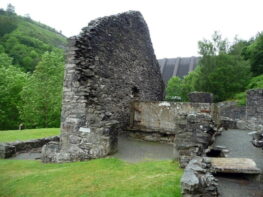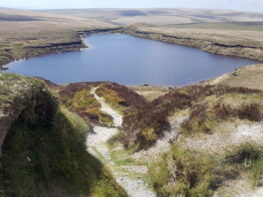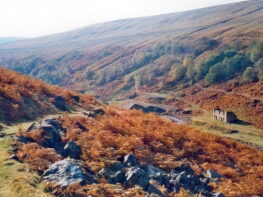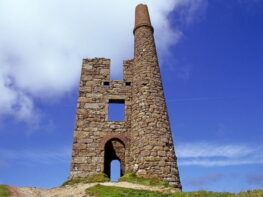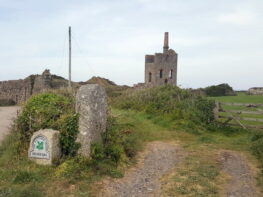
Rosedale East kilns, in the North York Moors, were erected in the 1860s.
Once mining was underway in Rosedale large ironstone deposits were soon discovered on the east side of the valley too.
Initially, resources were plentiful, in seams up to 14ft thick, but the quality soon deteriorated and after several stops and starts mining finally left here, and all of Rosedale, in 1926.
By then, around 11 million tonnes of ironstone had been taken from the valley and used in construction projects around the world such as Sydney Harbour bridge.
Relics of the entire mining and refining process and the communities that worked there still remain at East kilns.
Two monumental sets of calcining kilns can be seen for miles from across the valley. A chimney used for ventilating the mines stands high on the moor. Near derelict cottages and workshops show that this was once a bustling centre of industry with several hundred people working and living in the valley.
150 years ago many parts of the North York Moors looked very different to the present day – the valleys and hills were filled with fire, smoke and noise as they helped fuel the industrial revolution. A short but intense period of ironstone mining and railway construction left a huge impact on the landscape and its communities that can still be seen today.
This Exploited Land of Iron Project tells the fascinating story of this trailblazing period of industrial growth and exploitation. The project will record, conserve and protect some of the most iconic structures and landscapes that remain, help nurture the wildlife that has reclaimed these spaces, and ensure this important part of our history is not forgotten.
Rosedale, North York Moors

Rosedale East kilns, in the North York Moors, were erected in the 1860s.
Once mining was underway in Rosedale large ironstone deposits were soon discovered on the east side of the valley too.
Initially, resources were plentiful, in seams up to 14ft thick, but the quality soon deteriorated and after several stops and starts mining finally left here, and all of Rosedale, in 1926.
By then, around 11 million tonnes of ironstone had been taken from the valley and used in construction projects around the world such as Sydney Harbour bridge.
Relics of the entire mining and refining process and the communities that worked there still remain at East kilns.
Two monumental sets of calcining kilns can be seen for miles from across the valley. A chimney used for ventilating the mines stands high on the moor. Near derelict cottages and workshops show that this was once a bustling centre of industry with several hundred people working and living in the valley.
150 years ago many parts of the North York Moors looked very different to the present day – the valleys and hills were filled with fire, smoke and noise as they helped fuel the industrial revolution. A short but intense period of ironstone mining and railway construction left a huge impact on the landscape and its communities that can still be seen today.
This Exploited Land of Iron Project tells the fascinating story of this trailblazing period of industrial growth and exploitation. The project will record, conserve and protect some of the most iconic structures and landscapes that remain, help nurture the wildlife that has reclaimed these spaces, and ensure this important part of our history is not forgotten.
Rosedale, North York Moors


